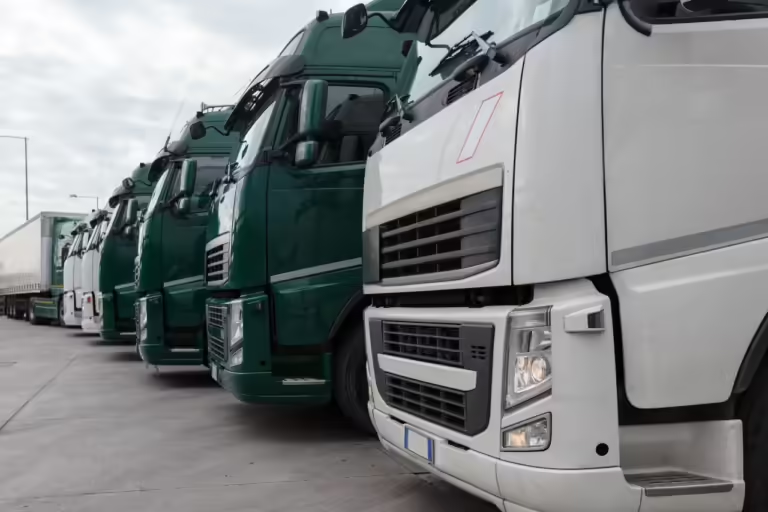Fleet Management and Commercial Insurance: How Smart Vehicles Affect Risk

Vehicle design and operation leads the smart technology revolution, as automakers seek to make driving safer and more enjoyable for drivers. Commercial enterprises have also embraced digital technologies in order to reduce accident rates, stay on top of maintenance needs and track fleets.
Up to 15 percent of new cars sold in 2030 could be fully autonomous, according to Paul Gao and fellow researchers at McKinsey. An even greater percentage will likely employ some kind of smart technology, including telematics to track driving behavior and driver assistance systems.
As smart vehicles change our driving habits, they also change the risk of driving itself. Commercial insurers who stay alert to changes in vehicle fleet management and operation equip themselves to address that risk more effectively.
Smart Tools for Fleet Management
In the mid-2010s, the conversation about smart auto technologies and autonomous vehicles focused primarily on personal vehicle use. A handful of high-profile accidents with serious consequences, however, caused many people to think twice about predicting a total autonomous vehicle revolution.
Today, self-driving tools and other smart vehicle technologies continue to develop — but the emphasis is now on their use in commercial vehicles rather than personal ones, says Cathy Seifert, director at CFRA Research.
For many businesses, smart tools for reducing accidents can provide welcome relief from risk. The annual accident rate for commercial vehicle fleets in the U.S. is around 20 percent, with an average related accident loss of $70,000, writes Susanna Gotsch at CCC Information Services. Commercial light trucks are the most likely to be involved in accidents, but no class of vehicle in commercial use is immune.
To reduce accident rates and associated costs, many companies are turning to telematics systems. These systems can track and measure a number of variables within an individual vehicle.
Approximately 74 percent of telematics used in commercial fleets involves tracking vehicles and equipment, writes Gotsch. Tracking hours of service, speed and distance, and driver behavior like sudden braking are also popular uses of the technology.
The number of new vehicles with embedded telematics systems has increased yearly over the previous decade. In 2017, over 32 percent of all new cars sold globally contained a telematics system — a 9 percent increase from 2016, write Martin Svegander and Johan Fagerberg at Berg Insight. Telematics are particularly popular in the United States, where they have been embraced as anti-theft devices as well as tools for drivers, businesses, automakers and insurance companies to better understand and address risk, according to an Acumen Research and Consulting study.
While the simplest telematics tools merely gather information locally, more advanced tools can connect vehicles in real time to data collection points, like a company’s servers. Some can even connect vehicles to city smart grids, allowing for monitoring of traffic flow and driver behavior on a much larger scale, writes Melissa Steinken at Adapt Automotive.

Risk and Coverage in the Smart Vehicle Fleet
Fully autonomous vehicles remain in the testing phase. Yet a number of tools exist to provide in-vehicle monitoring and feedback.
“The technology is becoming used more frequently in commercial operations to track trucking fleets and freight movement, monitor delivery times and driver productivity, and provide real-time updates and scheduled reporting via text or e-mail,” notes the U.S. Department of Transportation.
Businesses tend to embrace in-vehicle monitoring technologies first to improve their own day-to-day operations. Yet the technologies also offer opportunities to reduce risk, as well as to provide both a broader and deeper view of commercial driver behavior than underwriters have been able to access in the past.
Identifying Risks for Smart Commercial Vehicles
Smart vehicle technologies promise to reduce a number of risks for commercial fleets; however, they also pose new challenges.
For example, a 2019 report by the European Union Agency for Cybersecurity (ENISA) notes that while smart sensors may help to reduce the occurrence of conventional auto accidents, they also open up new avenues for cyberattacks on vehicles. Smart sensors and similar technologies can become portals for hackers to steal information or even take control of a vehicle remotely.
Currently, oversight of these systems and their safety is often lacking. “There’s no one technically responsible for these vehicles’ central computer systems. The automotive and equipment manufacturers need to recognize that as it stands, they serve as the guardians in the space, and the onus is on them,” says Thomas Holt, a criminal justice professor at Michigan State University.
Other risks existed before smart vehicle technologies, but these technologies can shine a new light on old risks. For example, many businesses have no set policy regarding the personal use of company-owned vehicles.
A lack of clarity on company vehicle use can “give the employee the feeling of having free rein when it comes to use of a company vehicle,” says Nicole Long, senior vice president at Brown and Brown Insurance, Orlando. It can also greatly increase the risk to the business that owns the vehicle and to the insurance company that provides coverage for it.
Assessing the risks of smart vehicles will require insurers to consider both how existing risks may change or be addressed by smart technologies and how the technology itself may create new avenues of risk.
Usage-Based Insurance for Commercial Driving
Currently, one of the difficulties of offering usage-based insurance — despite its popularity among customers — is in accurately calculating usage and risk. Yet situations like the COVID-19 shutdowns, which saw many businesses close, provide precisely the sort of situation in which usage-based insurance could benefit drivers, writes Jason Metz at Forbes.
Smart vehicle technologies may help insurers bridge the gap between existing coverage models and customer demand for flexible options like usage-based insurance. Smart sensors can, for instance, determine when a vehicle is in operation. Coupled with the right software, these sensors could trigger or suspend coverage according to vehicle use, without requiring human intervention.
For example, blockchain-based software may become a practical choice for insurers when coupled with smart vehicle technologies. In a 2018 article, an Italian research team led by F. Lamberti described a method for using smart sensors, supplemented by blockchain-based software, that would allow insurers to offer usage-based insurance in a highly streamlined fashion. The software and sensors would take on much of the work of calculating usage that makes UBI difficult to place currently.

How Insurers Can Meet the Smart Vehicle Future
As telematics, smart sensors and autonomous features continue to fill vehicles, insurance companies are changing their approach to account for these technologies. An Accenture survey found that 68 percent of insurers are planning to develop or are currently developing products and policies that address smart vehicles, writes Michelle Krause, senior managing director at Accenture’s Insurance Client Service Group.
In a 2020 study of new mobility technologies and their effects on risk analysis, researchers Nadine Gatzert and Katrin Osterrieder identified several ways insurance companies can prepare for a future in which smart vehicles are commonplace in both personal and commercial use.
For example, Gatzert and Osterreider recommend that insurers respond to a highly digitized smart vehicle future by employing advanced data analytics to better understand how smart vehicles operate. Staying on top of new trends in smart vehicles and population mobility can provide essential context for underwriters.
A future in which roads are full of completely autonomous vehicles is still decades away, predicts Todd Litman of the Victoria Transport Policy Institute. Yet commercial fleets full of smart technologies exist today, offering both opportunities and challenges for insurers.
For insurers, the digital revolution requires a fundamental shift in the way commercial vehicle fleet risks are assessed and covered. Insurers can use a number of digital tools to gather and analyze data, allowing for better underwriting decisions and a clearer vision of a smart vehicle future.
Images by: Paolo Gianfrancesco/©123RF.com, Sitthinan Saengsanga/©123RF.com, adrianhancu/©123RF.com
Further Reading
Featured
 18 June 2024
18 June 2024
 15 August 2024
15 August 2024
 1 July 2024
1 July 2024
